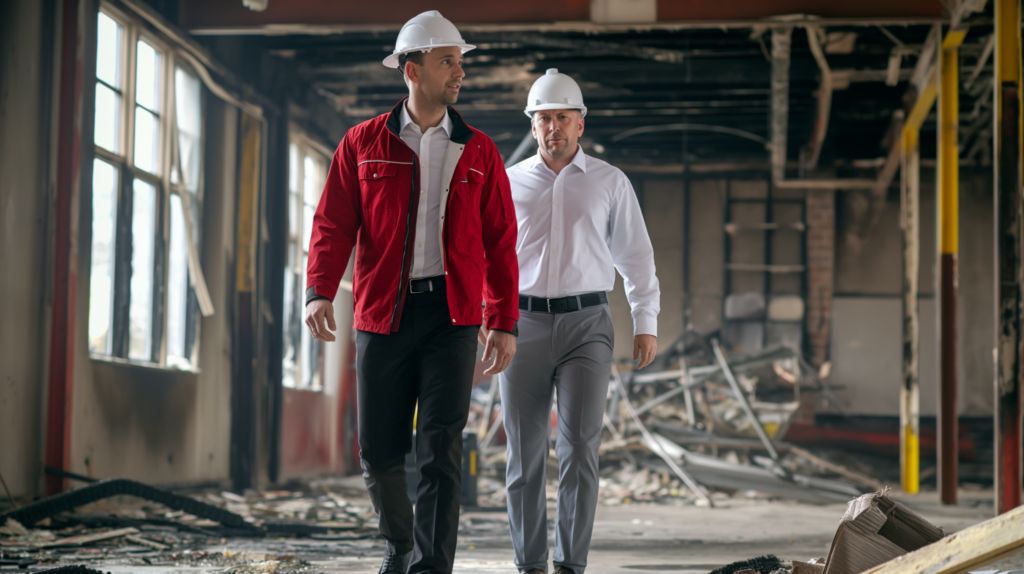Key Strategies to Overcome Stakeholder Challenges in Large Loss Restorations
Posted July 29, 2024

Large-scale property restoration projects are complex endeavours that require a delicate balance of technical expertise, project management skills, and stakeholder coordination. As restoration contractors, we often find ourselves at the center of a web of diverse interests, each pulling in different directions. Successfully managing these stakeholders is crucial for project success, but it comes with its own set of challenges.
Challenge 1: Conflicting Expectations
Different stakeholders often have varying priorities. Property owners, insurance companies, subcontractors, suppliers, and government agencies will each have their primary concerns. Their differing priorities may create tension and potential disagreements, as each party’s expectations could conflict with each other.
Solution: Develop a clear communication strategy that outlines project goals, timelines, and constraints upfront. Establishing regular stakeholder meetings can help align expectations and find compromises where necessary. By setting realistic goals and being transparent about constraints, it is possible to mitigate conflicts before they escalate.
Challenge 2: Communication Gaps
With multiple parties involved, ensuring clear and consistent communication can be daunting. Misunderstandings can lead to delays, frustration, and even project failure. Effective communication is the backbone of any successful project, yet it is often one of the most challenging aspects to maintain.
Solution: Implement a centralized communication platform where all stakeholders can access project updates, timelines, and relevant documents. This platform should facilitate real-time updates and provide a main hub for all project-related information. Additionally, establishing regular reporting methods and scheduled updates helps keep everyone informed of progress and challenges, reducing the likelihood of miscommunication.
Challenge 3: Stakeholder Engagement
Some stakeholders may be disinterested or difficult to reach, leading to poor feedback and missed opportunities for collaboration. This disengagement can stem from a lack of understanding of the project’s importance or from previous negative experiences.
Solution: Conduct a thorough stakeholder analysis at the project’s outset to identify all relevant parties and their interests. Use this information to tailor engagement strategies for each group, ensuring their voices are heard and valued. Personalized engagement can include regular updates, one-on-one meetings, and actively seeking their input on decisions that affect them. By demonstrating that their contributions are valued, you can foster a more collaborative environment.
Challenge 4: Resource Constraints
Large-scale restorations often strain available resources, both financial and technical, making it challenging to meet all stakeholder needs. Resource allocation becomes a balancing act, requiring careful planning and prioritization to ensure that critical aspects of the project are addressed without exceeding budgets or overextending the workforce.
Solution: Prioritize resource allocation based on critical project requirements and stakeholder influence. Identify the most crucial aspects of the project and allocate resources accordingly, while also considering the potential impact of stakeholders. Forming strategic partnerships or alliances to fill resource gaps can also be a viable strategy. These partnerships can provide additional expertise, equipment, or funding, helping to alleviate resource constraints.
Challenge 5: Adapting to Change
Restoration projects are dynamic, with unexpected issues often arising. Stakeholder needs and project parameters may shift during the process, requiring flexibility and quick adaptation. Resistance to change can lead to significant project delays and increased costs.
Solution: Build flexibility into your project management approach. Regularly reassess stakeholder needs and project goals, and be prepared to adapt your strategies accordingly. This could involve adjusting timelines, reallocating resources, or revising project scopes. Establishing contingency plans and maintaining open lines of communication with stakeholders about potential changes can help mitigate resistance and ensure a smoother adaptation process.
By proactively addressing these challenges, restoration contractors can create a more harmonious and productive stakeholder environment. Remember, effective stakeholder management is not just about completing the project – it’s about building lasting relationships and a stellar reputation in the industry.
Ultimately, success in large-scale property restoration hinges on our ability to navigate the complex stakeholder landscape. By identifying all relevant parties, understanding their interests, managing conflicts, and maintaining clear communication, we can turn potential obstacles into opportunities for collaboration and mutual success.
Looking to boost your large loss restoration capabilities? Click below to learn how an EMRG membership can help drive your success!

